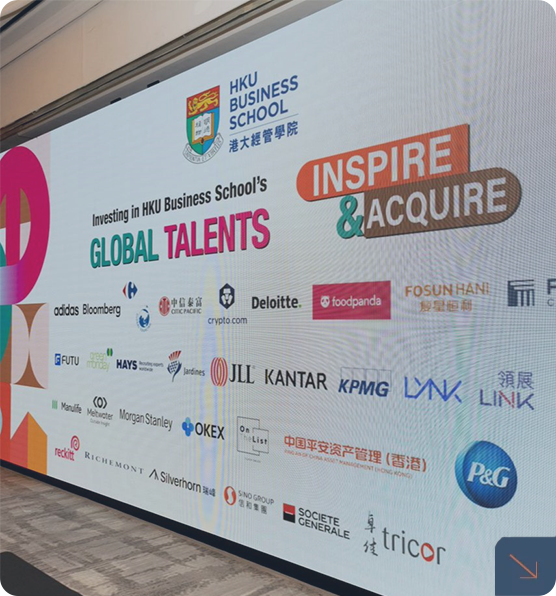Getting the best out of the gig economy

As the gig economy grows, companies need to adapt to a changed incentives landscape
The gig economy is growing at a fast rate. In 2022[i], 36 percent of working Americans—or about 58 million people—identified themselves as independent workers, up from an estimated 27 percent in 2016. In China in 2022[i], the number of gig workers was about a quarter of the workforce, or 200 million people. That number is predicted to double by 2036.
Gig workers are an important source of flexible labour for companies and the sheer size of the gig economy represents a major upheaval for companies’ work and hiring practices. Hiring workers to perform a task as a gig raises different challenges for employers than assigning the task to a permanent employee. To thrive in this new setting, companies need to understand how to motivate gig workers. In addition, employers need to understand their own changed role in this landscape and reassess their incentives and pay structures.
Changes in the workplace
The rapid increase in the number of gig workers—also called freelancers or independent workers—is due to a combination of the pandemic and its impact on the economy, changing work preferences and advances in technology.
The growth of the gig economy has upended the traditional manager-worker relationship. Where once the worker was directly supervised and monitored by a manager, now the gig worker typically works away from the company’s workplace, from home or from a shared workplace, for example.
Getting the best out of absent workers is a challenge for employers. One concern is slacking off—the belief that workers might shirk their work if they are not physically present and supervised in the workplace. The COVID pandemic highlighted this challenge when large numbers of workers were forced to work from home for extended periods. While many reported higher efficiency when working from home, their employers were not always convinced. Many believed their employees were not working as productively as they would if they were back in a supervised work environment. As the pandemic declined, employers were keen to get their workers back to the office.
It has not proved easy—many employees had found that working from home improved their work-life balance, for example, by doing away with the need to commute to and from the office each day. Many also found they enjoyed the autonomy of working at their own pace—a key attraction of the gig economy, and likely part of the reason for the rising numbers of workers who have chosen to join it. So when the time came to return to the office, some chose instead to leave their jobs and switched to freelancing. At the same time, the slowing economy coupled with the increased cost of living since the pandemic pushed some employees to take on gig jobs in addition to their full-time jobs to supplement their incomes, further boosting the competition.
For companies too, COVID highlighted the advantages of a gig economy. The global economy slowed during the pandemic, forcing many companies to let go of employees. To save costs, some began to hire independent workers to take their place on an ad-hoc basis. Often, gig workers are hired to work on specific projects, especially creative projects such as graphic design, content writing or marketing.
The growth of the gig economy has been heavily underpinned by technology. Global platforms such as Uber and Upwork have enabled large numbers of workers and hirers to find each other quickly and makes price comparisons easy. That ease of access to the marketplace has spurred increased sign-up and growing competition among gig workers competing for the same jobs. While workers can choose from a selection of posted jobs, employers can scan a large number of workers to find those with the best credentials for the task.
That type of increased competition has long been believed to spur workers’ output and innovation, but is that true of the new gig economy where the effect needs to be assessed on the individual level? New research conducted by Yanhui Wu and Feng Zhu, “Competition, Contracts and Creativity: Evidence from Novel Writing in a Platform Market”, looks at how high levels of competition affect the motivation and productivity of gig workers. The answers they found will help companies deepen their understanding of how to get the best out of gig workers.
Online novel writing
The researchers examined how the gig economy works in the setting of Chinese novel-writing platforms. Online novel writing is big business in China. It evolved in the last two decades to become a multi-billion dollar business by 2017, with more than 300 million users and about one million writers. The business operates on platforms that match authors with readers. The biggest platforms are backed by major Chinese tech companies, including Alibaba, TenCent and Baidu.
On these platforms, authors commit to writing a novel chapter by chapter. Readers buy each chapter at a set price fixed by the platform. Authors are paid in one of two ways: either a revenue-sharing agreement, typically split 50:50 with the platform, or on a fixed rate-per-word basis. In the revenue-sharing arrangement, the author’s income depends on how many readers choose to buy the chapter. In the fixed-rate arrangement, authors are paid a set rate for their work regardless of how many readers buy the chapters. For companies, it can be helpful to consider the revenue authors as gig workers, whose income depends on a fluctuating market, and the fixed authors as salaried employees who get paid the same amount regardless of market conditions.
The authors’ work was tracked on two levels: their monthly output, measured both by word count and frequency of book updates, and the creativity of their content, measured by comments made in reader reviews.
The researchers wanted to see how a surge in competition—similar to the current surge in the numbers of gig workers—affected authors’ output in both quantity, (measured by word count), and quality, (measure by the creativity of the content). They focused on a particular period in 2014 when several Chinese novel-writing platforms in the romance-related area were simultaneously closed down. The closures resulted in many of those authors moving to a new platform, creating a surge in the number of romance authors. The research focused on these romance authors.
The impact of competition
Readers pay per thousand words and one way that authors can attract more readers is by offering bonus content—writing more than one thousand words, but not charging for it. Authors can also write chapters more often, boosting their popularity with readers who want more frequent content updates.
The researchers found that when the competition increased, output also increased—and by a lot. The number of characters (Chinese characters, which can be considered as similar to words) that authors wrote per month almost doubled. The number of chapters they submitted increased by 29 percent, and the amount of bonus content that they offered their readers grew by 88 percent.
While competition boosted output, it had an insignificant effect on the creative efforts of authors. Authors’ creative efforts can take the form of creative twists, unexpected plot lines, cliffhangers and links to popular culture, such as TV shows.
The impact of pay structures
A key point was whether these authors were contracted on the revenue-sharing or the fixed-price model. The results showed that revenue-sharing authors improved both the quantity and quality of their output in the face of increased competition, but the same was not true for fixed-price authors, whose output on both counts barely changed.
“This sharp contrast confirms the argument that the fixed-price contract mutes an author’s response to intensified competition […], whereas the revenue-sharing contract spurs an author’s reaction to changing market conditions…” note the researchers.
For companies operating in the gig economy, the results show that increased competition spurs the productivity and creativity of workers who are paid on a performance basis, such as revenue sharing, far more than it spurs workers whose pay is not related to performance. Gig workers, then, are more willing to respond to market conditions that directly affect their pay. If a company offers more pay in a competitive environment, the result will likely be higher productivity.
But not all workers are motivated by higher pay rates. For some, the avoidance of risk is a bigger attraction than the possibility of more pay. For these workers, a fixed-rate of pay is preferable even if the rate of pay is lower, and an incentive to earn more is unlikely to result in higher output.
Getting the timing right
Companies often hire gig workers to beef up their teams when they are planning to launch a new product or service. New products and services are risky for companies—changes, even when they will improve the product or service, involve increased costs and an often unsettling period of adjustment for teams and customers. Major changes are usually less risky and costly at the outset of a product’s life cycle than later on.
The same proved true with regard to creative efforts. In the novel-writing tests, changes to the novel’s plot and design—the creative elements—were much more likely to take place early in the book’s life. Once the book was well underway, these creative changes did not appear.
It makes sense that major changes to the plot or direction of a novel are easier to build into the earlier stages of a novel’s life rather than when the action is already well underway, but there are other factors at play here too. For creative workers, such as novelists, pressure to innovate in a competitive environment does not often end well. Several psychological studies show that creative workers do not perform well under pressure, note the researchers. This is because the pressure to compete raises worries about failure and ends up reducing the likelihood of innovation.
Takeaways for companies
The research offers important points for companies to consider when hiring gig workers. In the gig economy, workers are no longer directly managed and supervised as they were in the traditional management system. In its place is the self-managed gig worker or freelancer who works unsupervised. In this changed landscape, companies need to reassess their pay structures to get the best out of these workers. Companies that can adapt to the changes and effectively manage and motivate gig workers will have an advantage when they need additional labour or help with particular projects.
Increased competition in the market allows employers to choose from among a vast range of gig workers, but the extent of market competition alone is no guarantee of better performance. The type of contract offered to gig workers has a marked effect on outcomes. Contracts with strong incentives, such as revenue sharing, encourage increased output in markets where there is strong competition. But one-size does not fit all: some gig workers prefer a fixed rate of pay that allows them to avoid risk. For these workers, the incentive of higher pay is no guarantee of greater output.
The authors note that their results apply mainly to individual workers in the areas of entertainment and arts and culture, and possibly also to app development and online product design. The findings may not apply as much to complex innovation, such as corporate research and development and other areas that involve long-term investments, high fixed costs and coordination among many workers.
About this Research
Yanhui Wu and Feng Zhu (2022) Competition, Contracts, and Creativity: Evidence from Novel Writing in a Platform Market. Management Science 68(12):8613-8634.
References
[i] https://www.mckinsey.com/featured-insights/sustainable-inclusive-growth/future-of-america/freelance-side-hustles-and-gigs-many-more-americans-have-become-independent-workers. August 2022.







